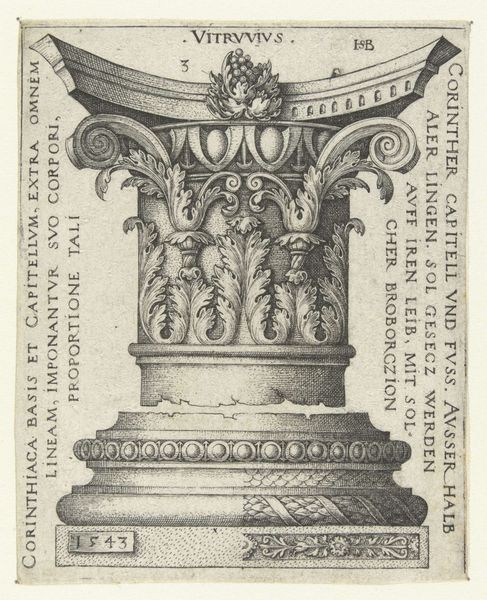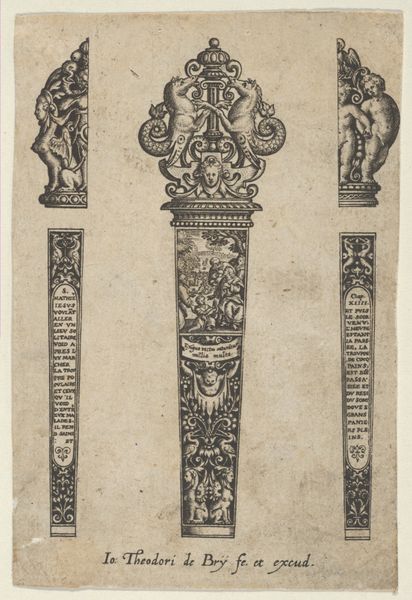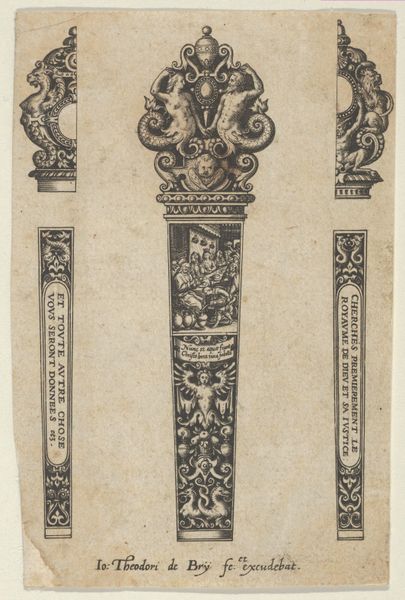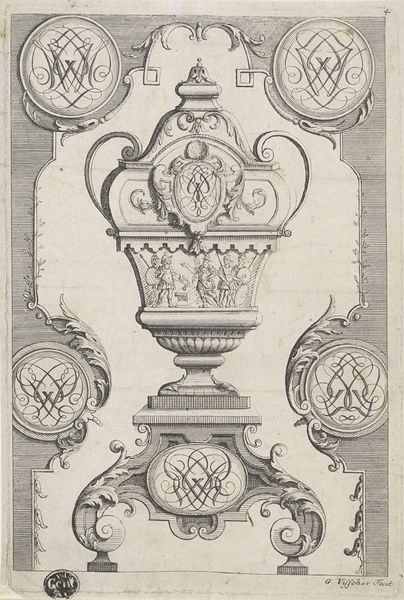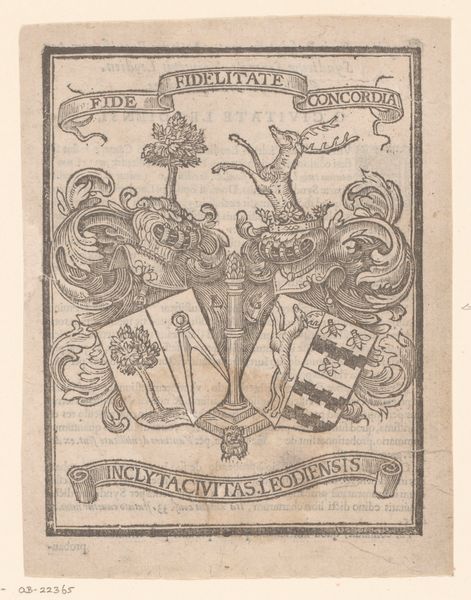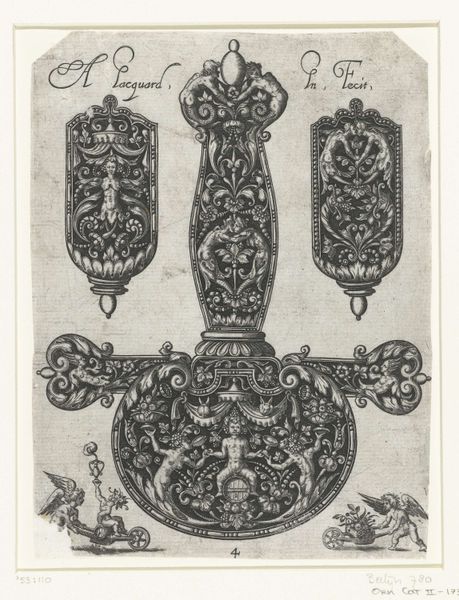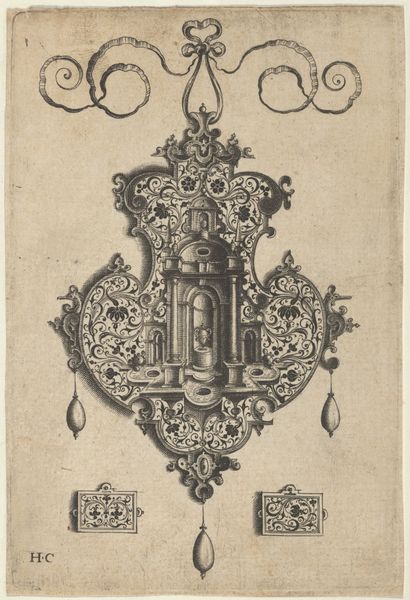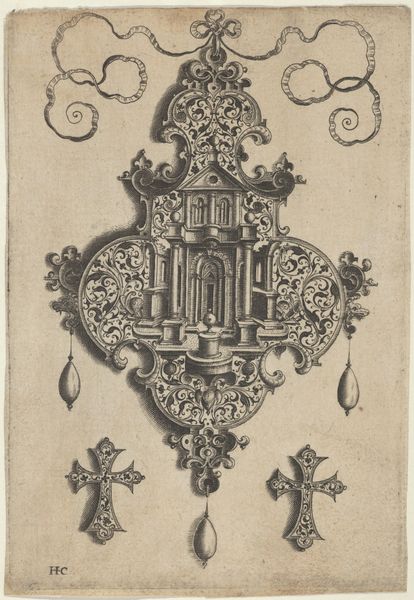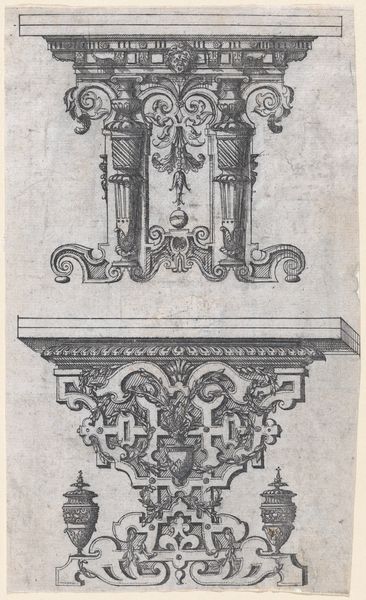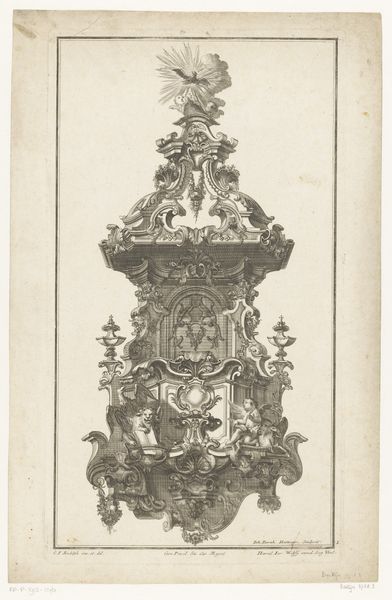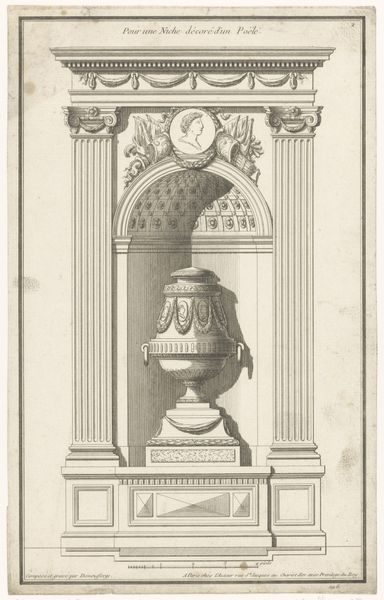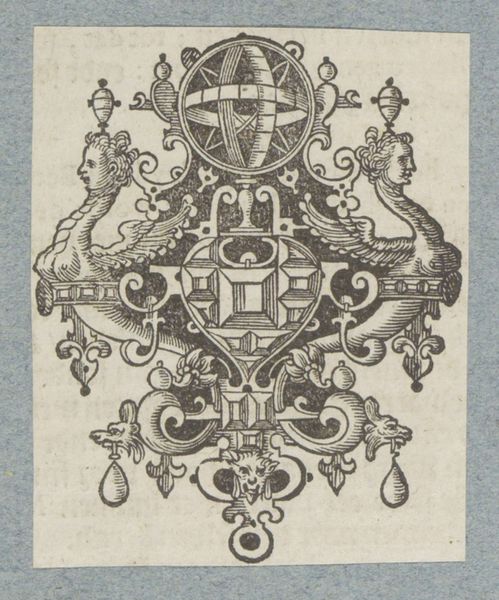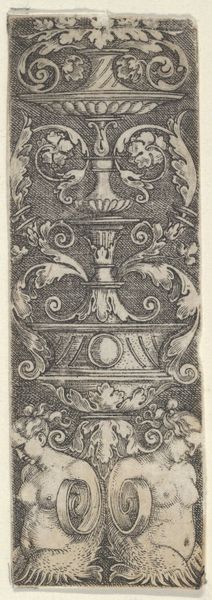
print, engraving, architecture
# print
#
classical-realism
#
form
#
11_renaissance
#
geometric
#
line
#
history-painting
#
engraving
#
architecture
Copyright: National Gallery of Art: CC0 1.0
Curator: Immediately, this feels monumental even in its miniature scale. I see this intricate drawing, and I’m transported to ancient ruins bathed in Mediterranean sunlight. It’s oddly both grandiose and intimate, isn't it? Editor: That’s a lovely observation. What we have here is an engraving titled "Capital and Base of a Column" by Sebald Beham, created in 1545. Beham, active during the German Renaissance, was deeply interested in classical forms and their architectural application. This piece seems almost like an exercise, doesn't it, in rendering classical ideals through printmaking. Curator: Absolutely, it’s almost clinical. I love how Beham meticulously renders every detail of the Doric column, especially those stylized volutes on the capital, topped by that...is that a human head? It’s a study in precision, isn’t it? Though, look at the center—it's cracked. Deliberately broken! A memento mori built right in? Editor: Indeed! The broken shaft is rather interesting. The visual break reminds us of time's relentless passage and architecture’s inevitable decay. It does suggest a statement about impermanence and decay, themes often explored during the Renaissance. More simply, Beham has given us an interpretation of Vitruvius’s book—that accounts for a number, which the Roman historian dedicated to Doric proportions, for the perfect column, rendered with Renaissance skill and awareness. Curator: Fascinating! I hadn't considered the intentional display of imperfection. Perhaps that break invites the viewer to reconsider the notion of idealized form by confronting a column that, like life itself, is both beautifully constructed and intrinsically flawed. Editor: Well, Sebald’s mark here, the signature “ISB” gives another clue as to his intent—showing this as his masterly construction, itself. In doing so, he aligns his craft with that of the great architectural achievements of antiquity. Even now, that column conveys stability but the artist speaks volumes to the artfulness of its creation. What does the piece convey to you now? Curator: Hmm. It's become even richer—now a layered commentary, connecting classical aspirations with the acceptance of reality, the artist to his subject! A column, broken yet enduring, and that Renaissance artist marking his own moment with posterity. I suppose that, broken or not, it certainly seems complete. Editor: A ruin reconstructed in thought. A Renaissance of reflection, yes? Thank you.
Comments
No comments
Be the first to comment and join the conversation on the ultimate creative platform.

